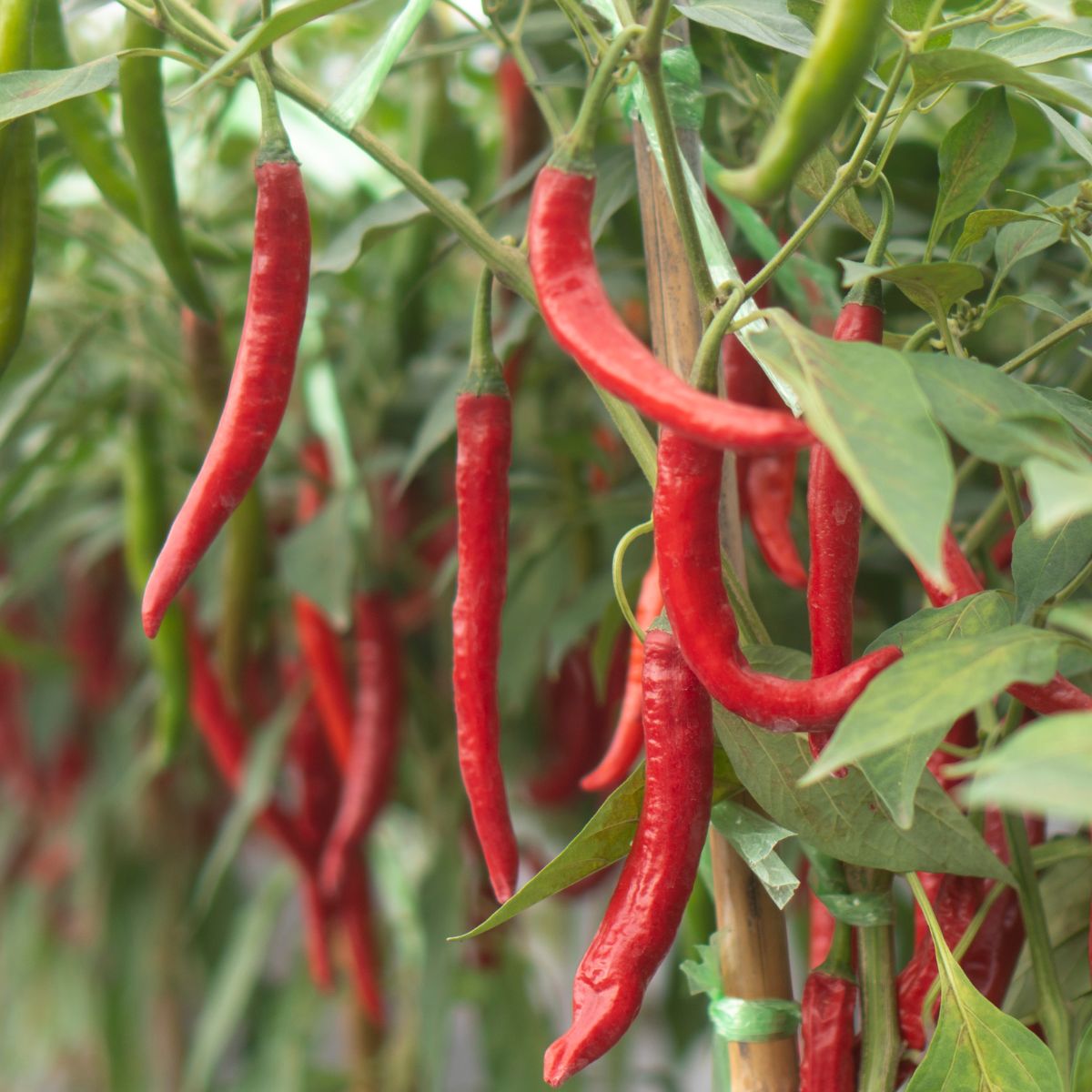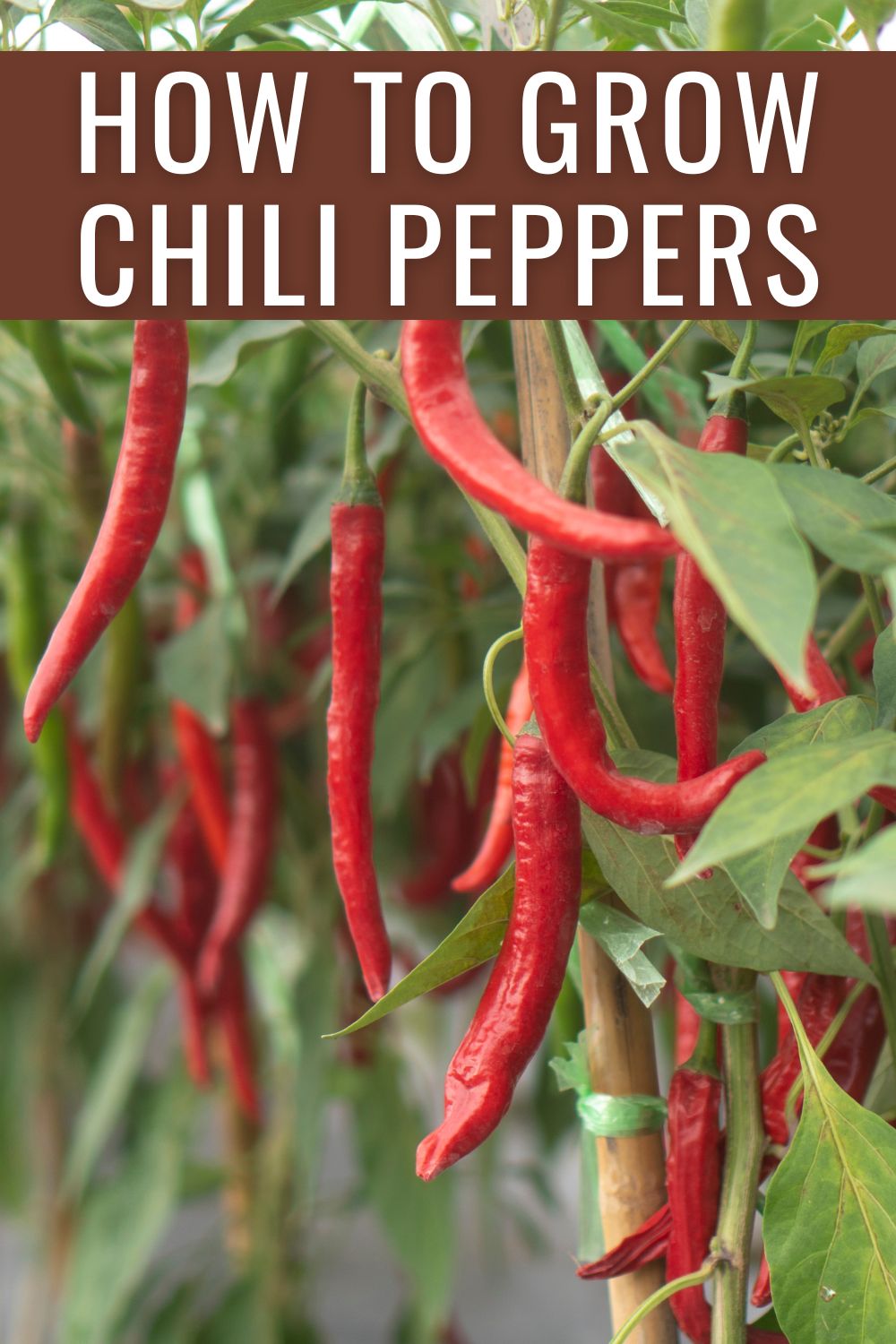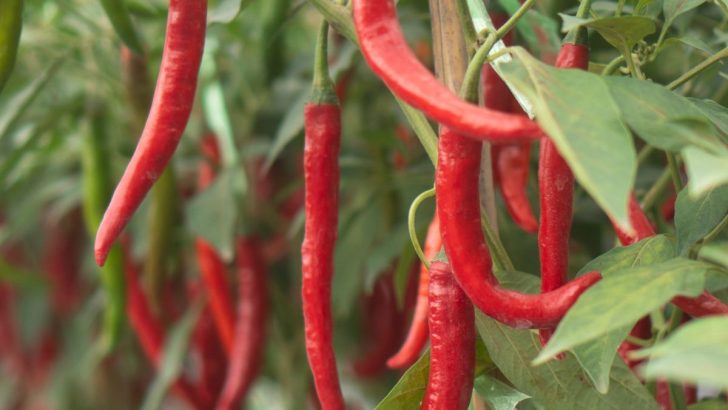Want to learn how to grow chili peppers? you will see that there are many benefits to these hot peppers, just as many as sweet peppers. Many gardeners like to have both in their gardens, especially for culinary purposes because they are so versatile.

Chili peppers, Capsicum annuum var. Annuum (Longum Group), are among the strongest flavorings added to cooking. These fiery peppers are ornamental as well as useful and make decorative pot plants. You can learn to grow your own chili plants in just a few simple steps.
Types Of Chili Peppers
Cayenne, chili, long, or red pepper (a pepper with many names)
The cayenne pepper got its name from the city of Cayenne in French Guiana. The plant originally comes from Central and South America and was discovered and brought back to Europe by the Spanish.
Today, this pepper is grown throughout the world. It is especially valued in tropical regions, where pulverized fruit is used as an ingredient in curry. It is, also, often used to give a feeling of warmth to the body in periods of cold weather. However, people not accustomed to frequent consumption of Chili Peppers may find them too hot for their liking!
Indian pepper
Archaeological diggings at Ancon, Huata, and Prieta in South America have revealed that various types of Capsicum were grown several hundreds of years before Europeans discovered America. It spread from there to Mexico where, today, the modern varieties are grown in large numbers.
The strong “Indian pepper” was quite a handy discovery for the Spanish and the Portuguese. The seeds store well so it was easy to transport them all over the world and plant them in other tropical and subtropical areas.
Small garden shrub
The chili pepper is a small, semi-woody shrub with short-stemmed leaves and white flowers. The size and shape of the peppers may vary, but they are typically long, pointed, and green, turning to red when ripe. A few times have green or yellow mature fruits.
The plant itself can be anywhere between 1-4 feet tall and is often pinched out to promote bushy growth.
How to Grow Chili Peppers
Chili pepper plants are easiest to grow from seeds sown in early spring. Sow them in individual pots into well-draining potting soil approximately 0.5 inches (1 cm) deep and keep them evenly moist. You can also use seed trays. They will germinate quickly in small peat pots with bottom heat and good humidity. A miniature propagating “greenhouse” over a radiator is excellent. The plants can later be moved outside to a regular greenhouse or grown in pots on your balcony or patio through the summer.
You should start your chili plants indoors in pots filled with potting soil eight weeks before your last expected frost. If kept in a warm, sunny spot they will germinate within two weeks, but chili peppers take several months to reach full maturity.
If planting from seeds, as soon as the first true leaves appear, the seedlings should be moved to larger pots with good, well-drained potting soil. Pinch the seedlings out, as soon as they have grown their first 3-5 pairs of leaves, so the plants will develop a bushy growth from the beginning.
Once the danger of frost has passed, planting chili pepper starts in the garden is as simple as digging holes and dropping them into place. Make sure to locate them where they will receive plenty of sunshine and remember that chili peppers benefit from consistent watering. With just a bit of preparation and care, you can have homegrown chili peppers for use in all your favorite recipes!
The mature chili peppers typically turn bright red. This is also usually a good indication of their heat level. The same is not true for bell peppers which can be yellow, orange, and red, and not hot at all.
Chili plants should be watered regularly, but the soil should not remain constantly saturated. Add fertilizer to the water every 2 weeks throughout the warm months of the year.
Hot Chili Pepper Varieties
Growing chili peppers at home is such a fun and rewarding experience! However, there are many different varieties of chili peppers, so how do you choose the right ones for you?
Sometimes it’s a good idea to try different varieties from mild to hotter peppers, to the hottest peppers, to help you decide which ones are best for you. Here are some common types.
- Barrackapore chili pepper – a hybrid chili pepper with a high heat level and a sweet, fruity flavor
- Douglah chili peppers – also known as the “Chocolate Habanero”, these peppers have a high heat level and a chocolate-brown color, and a slightly sweet, nutty flavor
- African devil peppers – very hot chilis with a heat level similar to the Habaneros, and a fruity flavor with a hint of smokiness.
- Aji Amarillo peppers – a common chili pepper in South America, with a medium heat level and a fruity, slightly sweet flavor
- Peruvian hot peppers – these peppers can vary in heat level and flavor depending on the specific variety, but they are generally considered to be quite hot.
- Aji cristal peppers – mild chili pepper with a slightly sweet, fruity flavor
- Aji dulce peppers – sweet chili pepper with a very mild heat level
- Anaheim peppers – mild to medium-hot chili pepper with a slightly sweet, slightly tangy flavor
- Bishop’s crown peppers – These are a unique, three-lobed pepper with a medium heat level and a slightly sweet and tangy flavor
- jalapeno – medium heat
- Padron – medium heat when picked green or allow to mature for hotter flavor
- heatwave improved mix – hot flavor and nice ornamental
- cayenne – hot, common pepper
- demon red – very hot dwarf variety
- tropical heat – extremely hot mix
Capsicum is the ingredient in the peppers that makes them hot. It is found in different levels in the different varieties of peppers.
Did you know? Chili peppers are perennials
While most gardeners grow peppers of all kinds as annuals, peppers are perennial plants in the right environment. If you grow our chili peppers in pots, bring them inside in the winter. Overwinter them in a cool and frost-free location and water them sparingly. No feeding is needed at this time.
In the early spring, cut back the pepper plant, and you might also want to repot them in fresh soil and give them a good feeding before setting them out in the garden.
Chili Pepper Pests And Diseases
- Aphids are fairly common, but they can usually be removed with the spray from a garden hose.
- Spider mites can be a problem if plants are kept warm and dry in the winter. While it may be possible to save the plant by spraying, it might be easier to just sow new seeds.
- Gray mold may occur in cold, damp summer conditions. The chili pepper comes from a warm climate and should be provided with a sheltered yet sunny position. Treat with fungicide, if symptoms appear, but only if the peppers are not to be eaten (in other words, you’re using them as decoration).
Grow these companion plants for peppers to get a better yield.
NOTE: Pesticides not used according to label directions can be harmful to man, animals, and plants. Use only pesticides that have labels with directions for home and garden use. Always read and follow label directions.
Hopefully, you’re now more confident as you know how to grow chili peppers and will include at least a couple to your vegetable garden.






